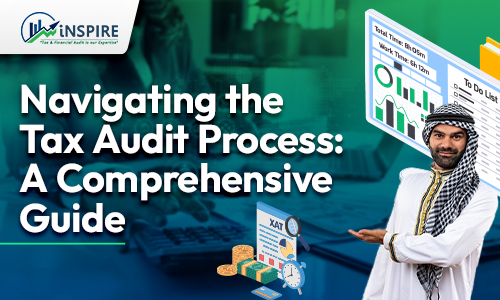
Navigating the Tax Audit Process: A Comprehensive Guide
Tax audits can be a nerve-wracking experience for individuals and businesses alike. However, understanding the process and being prepared can go a long way in ensuring a smoother journey through this financial scrutiny. In this blog post, we'll explore the steps involved in a tax audit and provide valuable insights to help you navigate this challenging terrain.
Tax audits can be a nerve-wracking experience for individuals and businesses alike. However, understanding the process and being prepared can go a long way in ensuring a smoother journey through this financial scrutiny. In this blog post, we'll explore the steps involved in a tax audit and provide valuable insights to help you navigate this challenging terrain.
Notification and Initial Contact
The first step in the tax audit process is the receipt of a notification from the tax authorities. This notification will outline the specific details of the audit, including the tax years under review and the documents requested. Typically, this communication may come via mail, phone, or in-person visits from tax officials.
Preparation and Organization
Once notified, it's crucial to begin organizing your financial records. This includes gathering all relevant documents such as income statements, expense receipts, bank statements, and any other documentation supporting your tax returns. Having a well-organized file can save time and demonstrate your commitment to compliance.
Opening Meeting
The tax authorities will often schedule an opening meeting to discuss the audit scope, objectives, and any initial questions. This is an opportunity to gain clarity on the audit process, ask questions, and understand the specific areas of focus. Being transparent and cooperative during this meeting sets a positive tone for the audit.
Fieldwork and Examination
The core of the audit involves a detailed examination of your financial records. Tax officials will review income, deductions, credits, and other relevant items to ensure accuracy and compliance with tax laws. This process may involve on-site visits to your business premises or remote access to electronic records.
Communication and Clarifications
Throughout the audit, effective communication is key. Respond promptly to any requests for additional information or clarification. If there are discrepancies or misunderstandings, address them promptly and provide supporting documentation. Clear communication fosters a collaborative environment and may expedite the audit process.
Draft Audit Report
Once the examination is complete, tax authorities will compile a draft audit report detailing their findings. This report will outline any adjustments proposed to your tax liability. It's essential to carefully review this document and seek professional advice if needed to understand the implications of the proposed changes.
Response and Rebuttal
You have the right to respond to the draft audit report, presenting your arguments, supporting evidence, and any applicable legal provisions. Be thorough and concise in your response, addressing each point raised by the tax authorities. This stage is critical in influencing the final outcome of the audit.
Final Audit Report and Resolution
After considering your response, the tax authorities will issue a final audit report. This report will detail the agreed-upon adjustments, if any, and the resulting changes to your tax liability. If you disagree with the final report, you may have the option to appeal the decision through the appropriate channels.
Post-Audit Compliance
Once the audit is concluded, it's important to implement any necessary changes to your accounting and tax practices to ensure future compliance. This may involve updating record-keeping procedures, enhancing internal controls, or seeking professional advice to prevent similar issues in the future.
Conclusion
While tax audits can be stressful, a proactive and transparent approach can significantly mitigate the challenges involved. By understanding the steps in the tax audit process and being prepared, individuals and businesses can navigate this complex landscape with confidence and compliance. Remember, seeking professional advice throughout the audit can be instrumental in achieving a favorable outcome.











